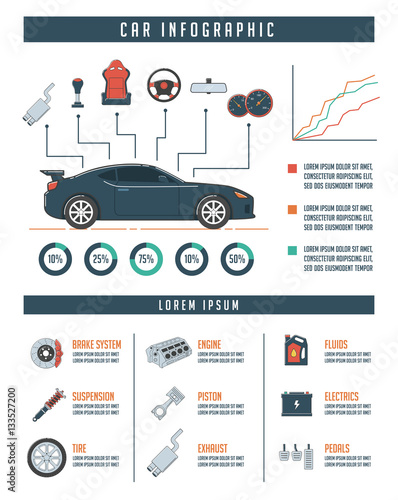Analyzing Your Automobile'S Alert Lights: Their True Implications
Analyzing Your Automobile'S Alert Lights: Their True Implications
Blog Article
Authored By-Lim Gilbert
When you're behind the wheel, those glowing warning lights on your dashboard can be a little bit difficult. Do you understand what they're trying to tell you regarding your vehicle's wellness? Understanding the value of these lights is essential for your security and the durability of your lorry. So, the next time one of those lights turns up, wouldn't you intend to analyze its message accurately and take the needed actions to resolve it?
Common Caution Lights and Interpretations
Recognize typical warning lights in your automobile and understand their definitions to ensure secure driving.
The most normal warning lights consist of the check engine light, which signals concerns with the engine or exhausts system. If simply click the following webpage begins, it's crucial to have your lorry checked without delay.
The oil pressure warning light shows low oil pressure, calling for instant focus to avoid engine damages.
A flashing battery light might suggest a malfunctioning charging system, possibly leaving you stranded otherwise attended to.
The tire stress tracking system (TPMS) light signals you to low tire pressure, impacting vehicle security and fuel performance. Ignoring this can lead to risky driving problems.
The abdominal muscle light shows a trouble with the anti-lock braking system, endangering your capability to quit promptly in emergencies.
Lastly, the coolant temperature advising light warns of engine getting too hot, which can result in serious damage if not resolved quickly.
Comprehending these typical caution lights will certainly assist you address issues promptly and keep safe driving problems.
Relevance of Prompt Attention
Understanding the typical caution lights in your cars and truck is just the primary step; the value of without delay attending to these warnings can not be stressed enough to guarantee your safety on the road.
When a warning light brightens on your dashboard, it's your vehicle's way of communicating a possible problem that needs focus. Neglecting these cautions can result in more serious issues later on, jeopardizing your safety and potentially costing you much more in repairs.
https://griffinnidxs.blazingblog.com/32007983/the-future-of-car-outlining-trick-expectations-for-the-coming-five-years to alerting lights can prevent malfunctions and mishaps. For instance, a flashing check engine light might indicate a misfire that, if left neglected, could cause damage to the catalytic converter. Resolving this quickly can save you from an expensive fixing.
Likewise, a brake system cautioning light might signal low brake liquid or worn brake pads, crucial parts for your safety when driving.
DIY Troubleshooting Tips
If you discover a caution light on your dashboard, there are a few DIY fixing pointers you can attempt prior to seeking professional aid.
The primary step is to consult your auto's guidebook to comprehend what the details caution light shows. Often the issue can be as easy as a loosened gas cap triggering the check engine light. Tightening up the gas cap might settle the problem.
https://brake-rotors40617.thenerdsblog.com/37626492/the-development-of-car-outlining-insights-right-into-the-next-five-years is a reduced battery, which can activate various warning lights. Examining the battery links for rust and ensuring they're secure may deal with the issue.
If a caution light persists, you can try resetting it by separating the car's battery for a couple of mins and after that reconnecting it. Additionally, inspecting your vehicle's fluid degrees, such as oil, coolant, and brake fluid, can aid fix alerting lights related to these systems.
Conclusion
Finally, comprehending your cars and truck's warning lights is necessary for keeping your car running smoothly and safely. By without delay attending to these notifies and knowing what they indicate, you can avoid costly fixings and prospective breakdowns.
Keep in mind to consult your vehicle's guidebook for certain details on each cautioning light and act appropriately to ensure a trouble-free driving experience.
Remain informed, stay safe when traveling!
